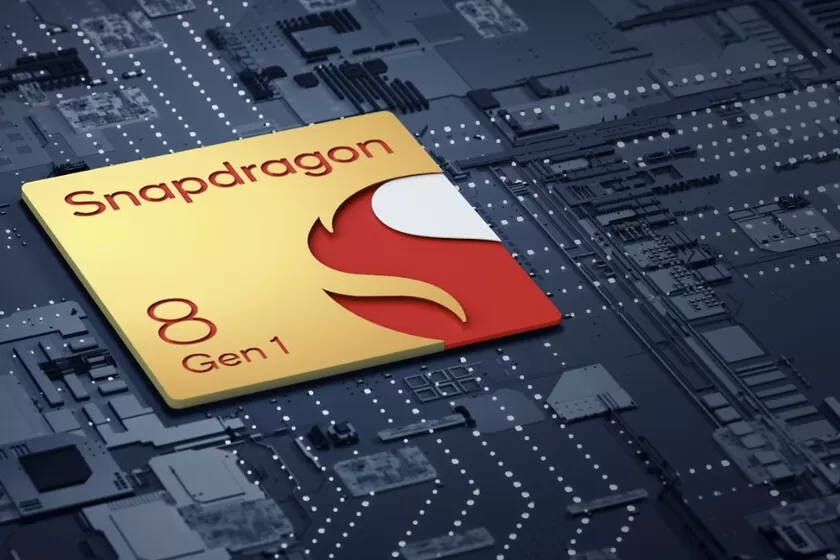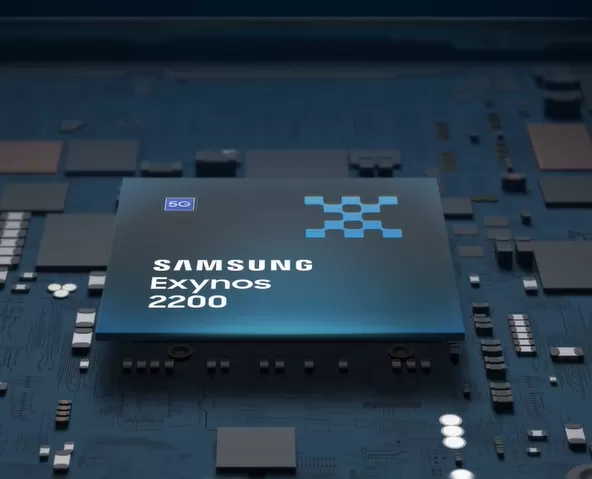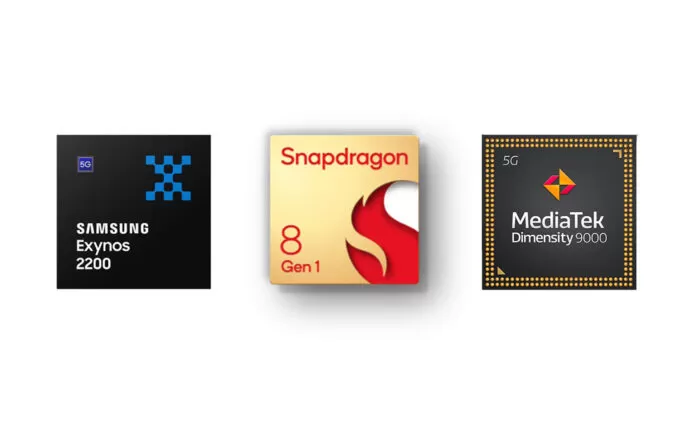The year 2022 will be dramatic for the SoC landscape as three major names are competing with each other by offering the most advanced technologies. Before delving deeper, a brief description of SoC will help you get the idea clearly. SoC is the heart of smartphones, ensuring higher performance and better user experience.
What is SoC?
SoC or System-on-a-Chip contains a complete processing system of a smartphone in a single package. It is different from the single processor chip package which is commonly used in building a PC. SoC has multi-processing parts, including modems, memory, and more. Since it contains multiple units together, it saves space and power consumption. The most common parts of SoC are:
Central Processing Unit (CPU): it is the brain of an SoC that operates codes for running the android operating system and different applications.
Graphics Processing Unit (GPU): as the name suggests, it takes care of graphics-related tasks, including visualizing apps’ interfaces and 2D and 3D gaming.
Image Processing Units (ISP): converts data from your phone’s camera into image or video files.
Digital Signal Processor (DSP): It performs more difficult functions than the CPU. It helps in decompressing music files.
Neural Processing Unit (NPU): it is used in high-performing smartphones with machine learning (AI) ability.
Modem: it converts the wireless signal into mobile data. It includes 4G LTE, 5G, WiFi, and Bluetooth modems.
These are some of the important features or components of SoC. These small details will help you learn the big and complex thoughts running behind the manufacturing of SoCs like Snapdragon 8 Gen 1, Exynos 2200, and Dimensity 9000.
Three Major Flagship SoC of 2022 – Snapdragon 8 Gen 1, Exynos 2200, and Dimensity 9000
Snapdragon 8 Gen 1:
Qualcomm introduced its most advanced 5G platform through its Snapdragon 8 Gen 1. Boosting system performance for revolutionary features like AI, photography, gaming, and connectivity, the process ensures a smooth experience that users always want.

Snapdragon® X65 5G Modem-RF System offers up to 10 Gbps speed. Added to this, Wi-Fi 6 & 6E with multi-gig speeds perfect for multiple devices on one single network. For all game lovers, the processing unit allows them to enjoy a desktop-like experience while playing games on their smartphones.
To get the complete specification of Snapdragon 8 Gen 1, you can check Qualcomm’s official page.
Exynos 2200:
Samsung does not stay far behind in the race and introduced ground-breaking features with Exynos 2200. This new SoC processor is designed with Xclipse GPU. Using the ARM CPU cores, Samsung makes the smartphone even more interesting for users. It comes up with the 5G modem with an advanced processing core and image signal processor.

For more details about the feature, you can check Samsung’s official page.
Dimensity 9000:
MediaTek introduced its next-generation smartphone processor that is not only immensely fast but also defines your entire experience. In the 5G age, MediaTek reveals its most promising SoC with this Dimensity 9000. This chip is majorly employed in gaming smartphones.

Check the entire specification, here.
Now, we have all details which help us compare which one leads the race.
| Qualcomm Snapdragon 8 Gen 1 | Exynos 2200 | MediaTek Dimensity 9000 | |
|---|---|---|---|
| Process | 4nm Samsung made | 4nm Samsung made | 4nm TSMC made |
| CPU | 1x Cortex-x2 @GHz 3x Cortex-A710 @2.GHz 4x Cortex-A510 @ 1.8GHz | 1x Cortex-X2 3x Cortex-A710 4x Cortex-A510 | 1x Cortex-X2 @3.05GHz 3x Cortex-A7710 @2.85GHz 4x Cortex-A510 @1.8GHz |
| GPU | Adreno | Xclipse 920 AMD RDNA2 cores | Arm Mali-G710 MC10 |
| Display | 144Hz refresh rate @QHD+ or 60Hz refresh rate @4K | 144Hz refresh rate @QHD+ or 120Hz refresh rate @4K | 180Hz refresh rate @FHD+ |
| Camera | Max 200MP single Dual and Triple possible Max 8k/30fps, 4K, HDR recording | Max 200MP Single Dual and Triple possible Max 8k/30fps, 4K, HDR recording | Max 320MP single Dual and Triple Possible Max 8k/24fps, 4K, HDR recording |
| Video Playback | 8K H.264, H.65, VP9 decode | 8K AV1, H.264, H.65, VP9 decode | 8K AV1, H.264, H.65, VP9 decode |
| RAM | LPDDR5 | LPDDR5 | LPDDR5X |
| Connectivity | Bluetooth v5.2 | Bluetooth v5.2 | Bluetooth v5.3 |
| Modem | 10Gbps download (mmWave) Sub-6GHz speed unknown 3GPP Release 16 5G | 7.35Gbps download (mmWave) 5.1Gbps download (sub-6GHz) 3GPP Release 16 5G | 7Gbps download (sub-6GHz) 3GPP Release 16 5G |
| Geekbench scores | 1240 single-core, 3,392 multi-core (tested on Galaxy S22 Ultra) | 1,287 single-core, 4,288 multi-core (tested on Galaxy S22 Ultra) | 1,248 single-core, 4,198 multi-core (tested on Vivo X80 Pro) |
Conclusion:
Since three major chipsets use the same CPU cores, you can expect similar levels of performance. Although clock speed and cache differences may change your experience completely. MediaTek’s TSMC 4nm manufacturing process may keep the Dimensity 9000 a little ahead. Besides, its LPDDR5X RAM added extra benefit when you want the fastest processor.
The Graphics department also reveals noticeable differences. Mediatek’s Dimensity 9000 uses Arm Mali-G710 MC10 GPU that denotes a 35% performance boost. However, Qualcomm’s latest Adreno GPU gives a tough fight as it offers 30% faster rendering speed than its previous generation.
Samsung’s Exynos 2200 is in the journey of making the most radical change in mobile graphics. Xclipse 920 GPU introduces the same AMD RDNA2 architecture used in Play Station 5 and other high-end gaming consoles.
Apart from the gaming zeal, the core smartphone performance is based on a few essential factors like imaging, networking smart, and machine learning. All these options perform flawlessly in these core areas. To give the title of a game-changer, we need to wait. Once consumers experience them, the differences will be clearer.
SIMILAR STORIES:

